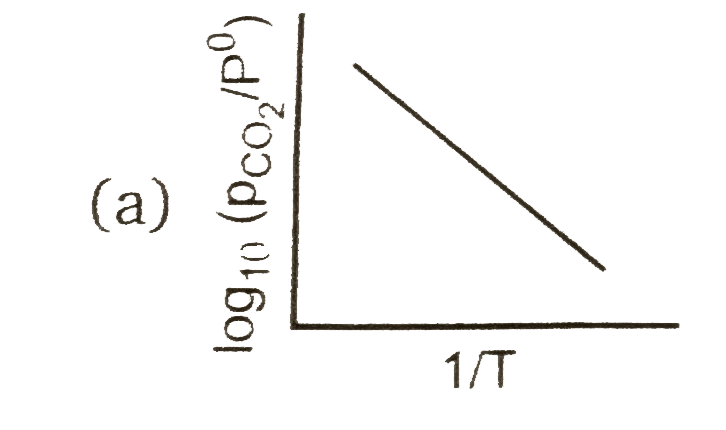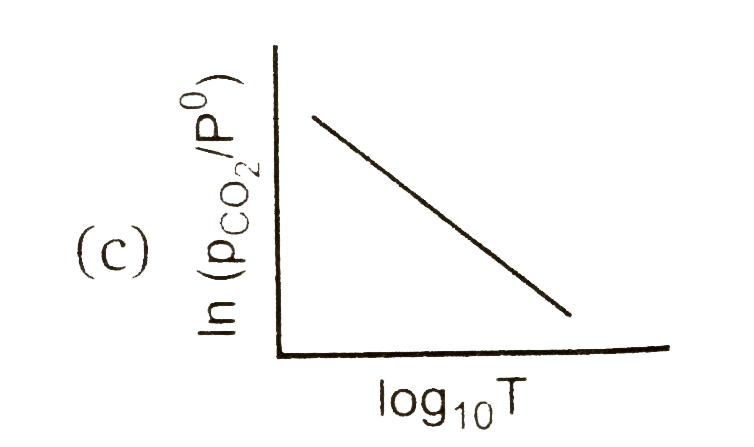For the chemical equilibrium,
CaCO3(s)⇔CaO(s)+CO2(g)
ΔrHɵ can be determined from which one of the following plots?Solution in Telugu




The correct Answer is:a
Step by step video & image solution for For the chemical equilibrium, CaCO_(3)(s) hArr CaO(s)+CO_(2)(g) Delta_(r)H^(ɵ) can be determined from which one of the following plots? by Chemistry experts to help you in doubts & scoring excellent marks in Class 11 exams.
Updated on:21/07/2023Topper's Solved these Questions
- CHEMICAL EQUILIBRIUMBOOK - NARENDRA AWASTHICHAPTER - CHEMICAL EQUILIBRIUMEXERCISE - Level 1 (Q.93 To Q.122)
1 Videos
- CHEMICAL EQUILIBRIUMBOOK - NARENDRA AWASTHICHAPTER - CHEMICAL EQUILIBRIUMEXERCISE - Level 2
1 Videos
- ATOMIC STUCTUREBOOK - NARENDRA AWASTHICHAPTER - ATOMIC STUCTUREEXERCISE - level 2
1 Videos
- DILUTE SOLUTIONBOOK - NARENDRA AWASTHICHAPTER - DILUTE SOLUTIONEXERCISE - Level 3 - Match The Column
1 Videos
Similar Questions
An equilibrium mixture at 700 K of 0.05M N2(g)and0.2MNH3(g) is present in a container .Now if this equilibrium is disturbed by adding N∘ (g) so that its concentration becomes 0.15M just after addition then which of the following graph represents the above situation more appropriately:
View SolutionCalculate ΔrG for the reaction at 27∘C
H2(g)+2Ag+(aq)⇔2Ag(s)+2H+(aq)
Given : PH2=0.5 bar, [Ag+]=10−5M,
[H+]=10−3M,ΔrG∘[Ag+(aq)]=77.1kJ/mol
View SolutionA small particle of mass m moves in such a way that the potential energy U = ar2 where a is a constant and r is the distance of the particle from the origin. Assuming Bohr's model of quantization of angular momentum and circular orbits, find the radius of nth allowed orbit.
View SolutionColumn -I and Column -II contain four entries each. Entries of column-I are to be matched with some entries of column-II. One or more than one entries of column-I may have the matching with the same entries of column-II.

View SolutionFor the chemical equilibrium, CaCO_(3)(s) hArr CaO(s)+CO_(2)(g) Delta_(r)H^(ɵ) can be determined from which one of the following plots?
View SolutionCalculate the pressure of CO_(2) gas at 700 K in the heterogenous equilibrium reaction CaCO_(3)(s) hArr CaO(s)+CO_(2)(g), if DeltaG^(ɵ) for this reaction is 130.2 kJ mol^(-1) .
View SolutionConsider the reaction
CaCO3(s)⇔CaO(s)+CO2(g)
in closed container at equilibrium. What would be the effect of addition of CaCO3 on the equilibrium concentration of CO2?
View SolutionCalculate the pressure of CO_(2) gas at 700 K in the hetrogeneous equilibrium reaction CaCO_(3)(s) hArr CaO(s)+CO_(2)(g) , if DeltaG^(ɵ) for this reaction is 130.2 kJ mol^(-1) .
View SolutionCaCO_(3)(s) hArr CaO(s)+CO_(2)(g) in closed container at equilibrium. What would be the effect of addition of CaCO_(3) on the equilibrium concentration of CO_(2) .
View Solutionwhich is correct about the following reaction ?
CaCO3(s)⇔CaO(s)+CO2(g)
View SolutionFor the reaction : CaCO_(3) (s) hArr CaO (s) + CO_(2) (g)
View SolutionFor the chemical equlibrium, CaCo_(3(s))hArrCaO(s)+CO_(2)(g),DeltaH_(r)^(@) can be cetermined from which one of the following plots
View SolutionFor the chemical equilibrium , CaCO_3 (s) hArr CaO (s) + CO_(2) (g) , Delta_(r) H^(@) can be determined from which of the following plots ?
View SolutionThe reaction CaCO_(3)(s) hArr CaO(s)+CO_(2)(g) reaches the state of equilibrium when
View SolutionFor the chemical equilibrium,
CaCO3(s)⇔CaO(s)+CO2(g)
ΔrHɵ can be determined from which one of the following plots?
View SolutionFor the reaction at equilibrium CaCO_(3) hArr CaO(s) + CO_(2)(g) What CaO(s) is removed reaction moves in forward direction.
View Solution
